Looking for the biggest lake in Ohio? Since there are multiple lakes in Ohio, you will not be able to figure out that on your own. However, we did all the hard work, and we share information with related to the biggest lakes in Ohio as of now. This is the list of top 20 biggest lakes that you can see in Ohio.
[googlemaps https://www.google.com/maps/d/u/3/embed?mid=1_4FP3ustjLyVE8cR-CVop0auu77Yvgnh&w=640&h=480]
1. Lake Erie – Largest and deepest lake in Ohio
Lake Eris is the largest and deepest lake that you can discover in Ohio as of now.
The surface area of this lake is 9,910 square miles. This lake has a shoreline length of 799 miles.
The lake has water volume of 116 cubic miles. Moreover, the maximum depth of this lake is 210 feet. It is located at the northern region of the state.
Lake Erie is located on the International Boundary between Canada and the United States, with the Canadian province of Ontario, specifically the Ontario Peninsula, on the northern shore and the United States of Michigan, Ohio, Pennsylvania, and New York on the western, southern, and eastern shores.
These governments use water borders to divide the lake’s surface area. Cleveland, the largest city on the lake, anchors the Great Lakes region’s third largest U.S. metro area, behind Greater Chicago and Metro Detroit.
Buffalo, New York; Erie, Pennsylvania; and Toledo, Ohio are among the other important cities along the lake’s shore.
One of the world’s greatest freshwater commercial fisheries is found in Lake Erie.
Because of the lake’s comparatively mild temperatures and large supply of plankton, which is the fundamental building element of the food chain, Lake Erie’s fish populations are the most prolific of the Great Lakes.
Around the lake, there are several public parks. In Springfield Township, western Pennsylvania, a wildlife reserve was established in 1991 for hiking, fishing, cross-country skiing, and beach strolling.
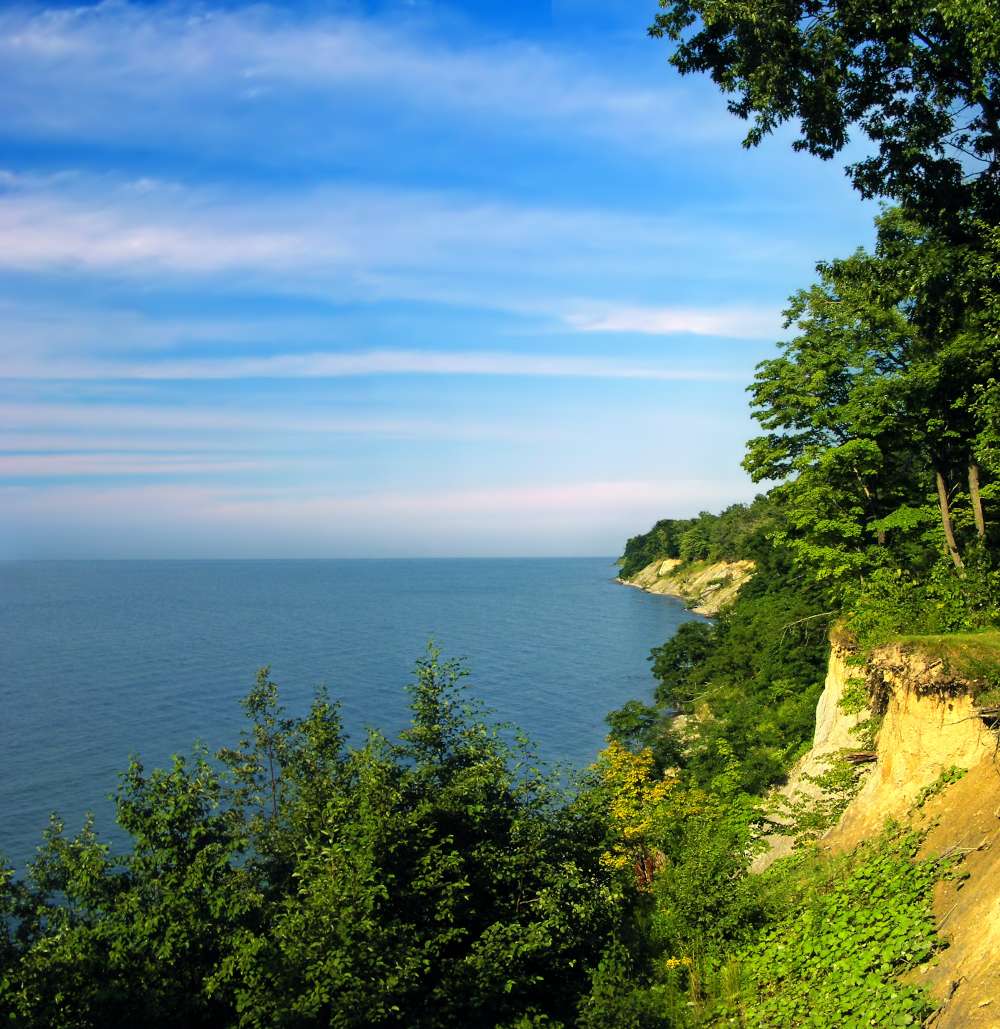
Read: Biggest Lakes In The United States Of America [Top 20]
Learn about the Lake Superior Largest Lake in the USA
2. Pymatuning Lake – Second largest lake in Ohio
Pymatuning Lake is the second largest lake in Ohio. The surface area of this lake is 17,000 square miles. This lake has a shoreline length of 1,700 miles.
The lake has water volume of 450 cubic miles. Moreover, the maximum depth of this lake is 35 feet. It is located at Cleveland.
Pymatuning is a man-made lake that spans the Ohio/Pennsylvania border between Ashtabula County, Ohio, and Crawford County, Pennsylvania, with 70 miles of shoreline.
The lake provides water to the Shenango and Beaver valleys, reduces flood damage, and serves as an excellent recreational destination.
On the lake in Ohio and Pennsylvania, there are two full-service state parks titled “Pymatuning State Park.”
A picturesque 2-mile-long causeway bridge crosses the centre of the lake, linking the Pennsylvania villages of Espy Ville and Andover with the Ohio towns of Andover.
Pymatuning Lake is known for its excellent walleye fishing and is considered one of the best lakes in the state for muskellunge, walleye, largemouth bass, and smallmouth bass.
The Ohio Division of Wildlife and/or the Pennsylvania Fish and Boat Commission stock walleye fingerlings (1″+), fingerling muskellunge (4″-6″), and advanced fingerling muskellunge (9′-11″) each year.
Pymatuning Lake allows non-powered boats and boats with motors up to 10 horsepower.
The marinas on the lake hire float boats, motorboats, rowboats, canoes, and motors. On the Ohio side of the lake, there are five new launch ramps.
There are two state campsites on the lake, as well as private campgrounds and cabin rentals.
There are several boat rental concessions placed throughout the lake, as well as 360 docks accessible for seasonal rental.
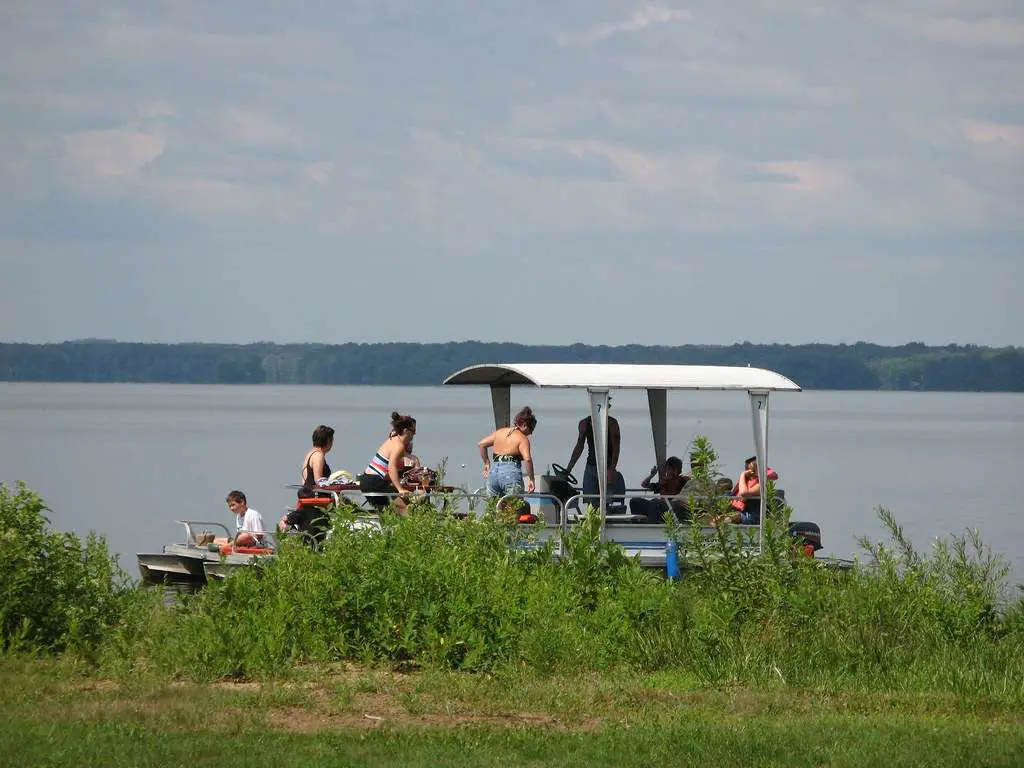
Learn about the largest natural lake in Texas
3. Grand Lake St. Mary’s – largest man-made inland lake in Ohio
The largest man-made inland lake in Ohio is none other than Grand Lake St. Mary’s.
The surface area of this lake is 12,900 square miles. This lake has a shoreline length of 415 miles.
The lake has water volume of 218 cubic miles. Moreover, the maximum depth of this lake is 7 feet. It is located at Lima.
Grand Lake St. Mary’s is Ohio’s biggest inland lake, originally built as a feeder reservoir for the Miami-Erie Canal. It is 9 miles long and 3 miles broad, with 52 miles of shoreline and a total area of more than 12,900 acres.
Around the lake, three lighthouses keep watch. The earliest was built in 1923, while the most recent was built in 2003.
Boating, hunting, fishing, swimming, and picnicking are all available year-round at Grand Lake Saint Mary’s State Park. A nature centre and a boat ramp with overnight courtesy docks are available at the campground.
The Grand Lake St. Mary’s Seaplane Base is Ohio’s sole seaplane airfield. Throughout the year, fishermen and women are drawn to the sport of fishing.
Largemouth bass, white and black crappies, bluegills, walleye, channel and flathead catfish, yellow perch, bullheads, carp, and suckers all inhabit the lake.
The major food source is gizzard shad. The beachfront fishing piers on Grand Lake St. Mary’s are handicapped accessible.
The ODNR Division of Wildlife operates the St. Mary’s Fish Hatchery on the lake’s eastern side.
The hatchery raises saugeye, walleye, channel catfish, and bass, as well as other species, for use in Ohio’s public fishing waterways.
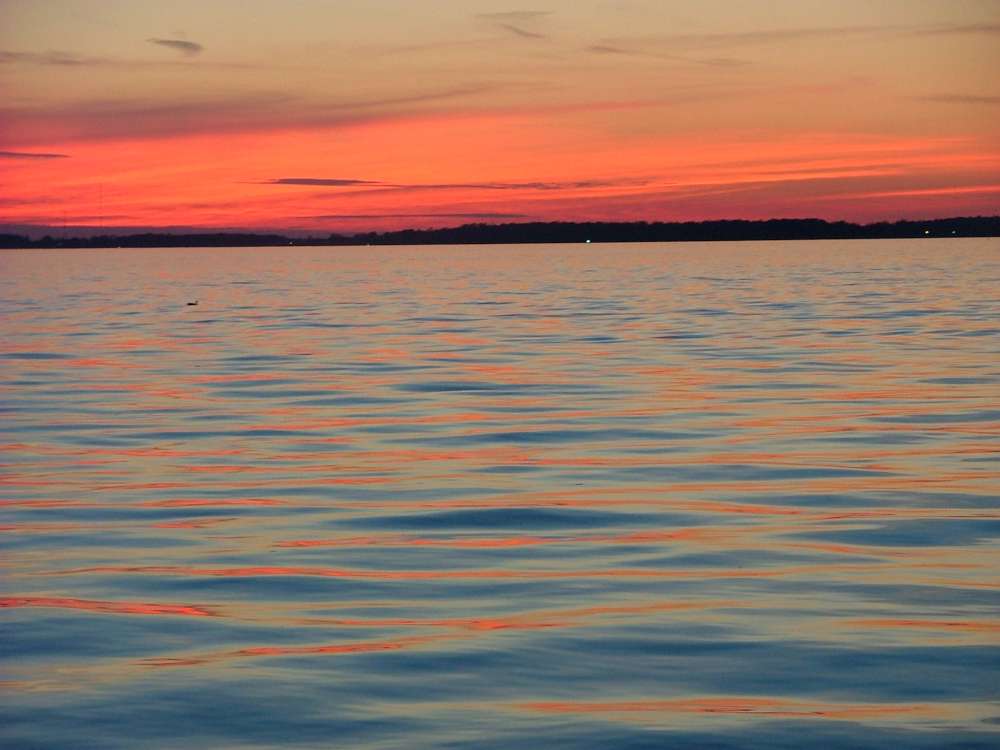
Read: Biggest Lakes In New York [Top 20]
Learn about the largest clear clean water lake in New York
4. Mosquito Creek Lake – The second largest inland lake in Ohio
The second largest inland lake you can see in Ohio as of now is Mosquito Creek Lake. The surface area of this lake is 7,850 square miles.
This lake has a shoreline length of 215 miles. The lake has water volume of 450 cubic miles. Moreover, the maximum depth of this lake is 24 feet.
It is located at Cleveland.
The US Army Corps of Engineers manages Mosquito Lake, a 7,850-acre reservoir.
Mosquito Lake (also known as Mosquito Creek Lake) was built primarily to help the city of Warren with flood management, pollution reduction, and water supply.
It is Ohio’s second biggest inland lake, behind Grand Lake St. Mary’s, which is the state’s largest.
Mosquito Lake, in the city of Cortland in northern Ohio, has become one of the top ten most popular outdoor leisure destinations in the area.
The Mosquito Lake Marina sponsors a butterfly garden, an amphitheater, and free summer concerts in Mosquito State Park.
Over 500 campsites are available, including a five-acre off-leash dog park enclosed by a split-wood and mesh fence with plenty of shade.
There is also a separate swimming area for pets.
Mosquito Lake offers more than just water sports, hiking, camping, and picnics.
The Mosquito Lake Marina sponsors a butterfly garden, an amphitheater, and free summer concerts in Mosquito State Park.
Over 500 campsites are available, including a five-acre off-leash dog park enclosed by a split-wood and mesh fence with plenty of shade.
There is also a separate swimming area for pets.
Mosquito is known for its exceptional walleye fishing, but anglers will also find crappie, bass, northern pike, and catfish in plenty.
The Division of Wildlife stocks walleye every year, and they’re commonly taken from the lake in sizes ranging from 17 to 20 inches.
Crappie and bass are frequently caught while fishing along the shoreline’s modest depths. Channel and flathead catfish grow to enormous sizes in Mosquito Lake.
Bluegill, perch, northern pike, and carp may all be found in the lake.
Fishing through the ice during the winter freeze is a favorite activity among anglers. The cold waters of Mosquito Creek have produced several excellent walleye and panfish captures.
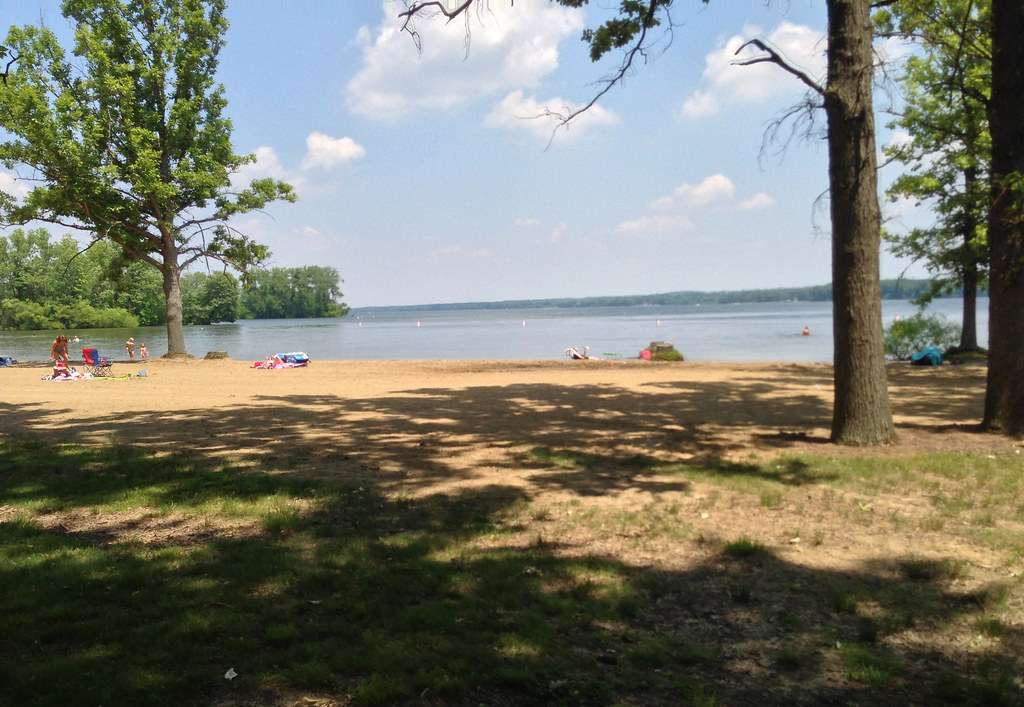
Learn about The shallowest lake in Pennsylvania
5. Indian Lake-Largest Lake that links to the Atlantic Ocean
Some of the lakes in Ohio are linked with the Atlantic Ocean. The largest lake that links to the ocean is Indian Lake. The surface area of this lake is 6,134 square miles.
This lake has a shoreline length of 295 miles. The lake has water volume of 425 cubic miles. Moreover, the maximum depth of this lake is 15 feet. It is located at Cleveland.
Indian Lake is around 20 miles southeast of Lima and just 30 miles from Grand Lake St. Mary’s, it is located on State Road 235N near Lakeview, Ohio.
The Miami and Erie Canal’s feeder lake, Indian Lake, was completed in 1851.
It spans 5,800 acres and has a 29-mile shoreline. Indian Lake was added to the newly formed Division of Parks and Recreation of the Department of Natural Resources in 1949.
Indian Lake is currently famous for its year-round water activities, such as boating, fishing, water skiing, camping, ice fishing, and snowmobiling.
Indian Lake is a renowned fishing spot because of its populations of saugeye, largemouth bass, white and black crappie, bluegill, channel catfish, white bass, yellow perch, carp, and bullheads, which are all nationally known.
The Division of Wildlife stocks saugeye fingerlings every year. The major food source is gizzard shad.
Each year, Indian Lake hosts many major fishing competitions, as well as weekly contests hosted by local bass organizations.
Anglers from all around the country go to Indian Lake to compete in these competitions.
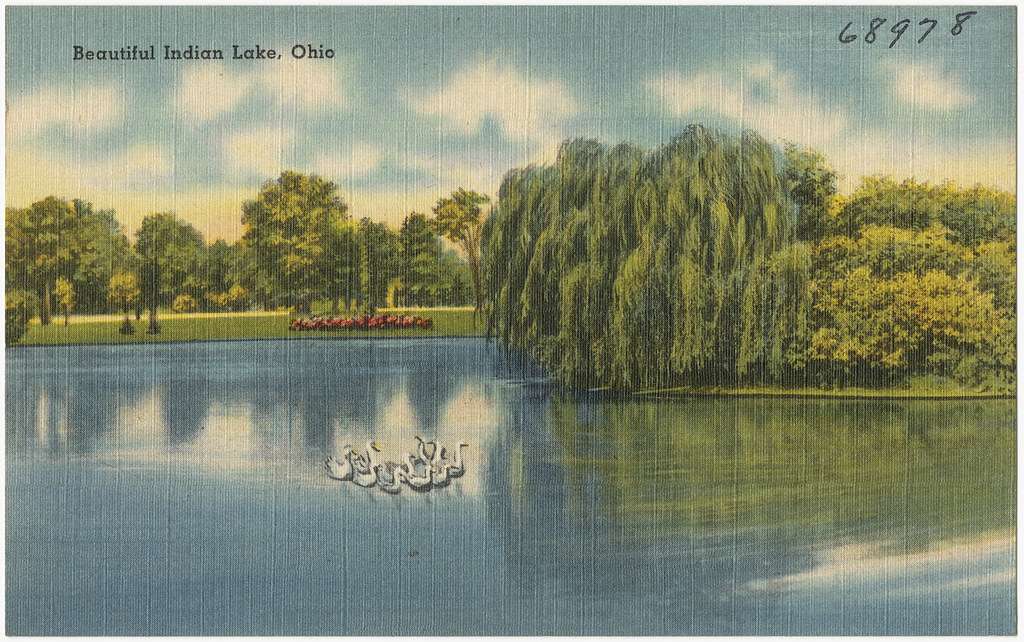
Learn about the largest body of water wholly contained within Illinois
6. Berlin Lake – Sixth deepest lake in Ohio
Berlin Lake is the sixth deepest lake that you can see in Ohio as of now.
The surface area of this lake is 3,596 square miles. This lake has a shoreline length of 120 miles. The lake has water volume of 176 cubic miles.
Moreover, the maximum depth of this lake is 76 feet. It is located at Cleveland.
Berlin Lake is located in the countryside of northeastern Ohio, close to Akron, Youngstown, and Warren. The lake is 3,590 acres in size and is bordered by 70 kilometers of gently to moderately sloping shoreline.
The region is covered with beech and maple trees, which provide shelter and lovely colour schemes in the fall.
Around the lake, a diverse range of animals may be found. Binoculars are suggested for watching ospreys that are nesting. bald eagles and other natural wonders.
On Berlin Lake, the Mill Creek Recreation Area provides a range of recreational options such as camping, boating, picnics, and simply resting in the quiet surroundings.
Although the lake is a popular swimming spot, there is no dedicated beach or lifeguard on duty. Berlin Lake is known for its outstanding walleye fishing, with an average depth of around 16 feet.
It’s one of the few lakes in the vicinity where natural reproduction keeps the walleye population alive.
Anglers may also catch largemouth and smallmouth bass, muskie, crappie, and bluegill in the lake, which are all abundant.
Concessionaires positioned around the lake sell fishing equipment and supplies. On Berlin Lake, there are no horsepower limitations, but there are five specific zones with different laws for speed limits, wake zones, water skiing, and sailboats exclusively.
Berlin Lake is frequented by boats ranging in size from small fishing boats and sailboats to big cruisers and runabouts with limitless horsepower.
Around the lake, there are several launching ramps. Around the lake, there are many private marinas and concessionaires with boat launch ramps, docking, repair, and retail shops selling fishing and boating goods.
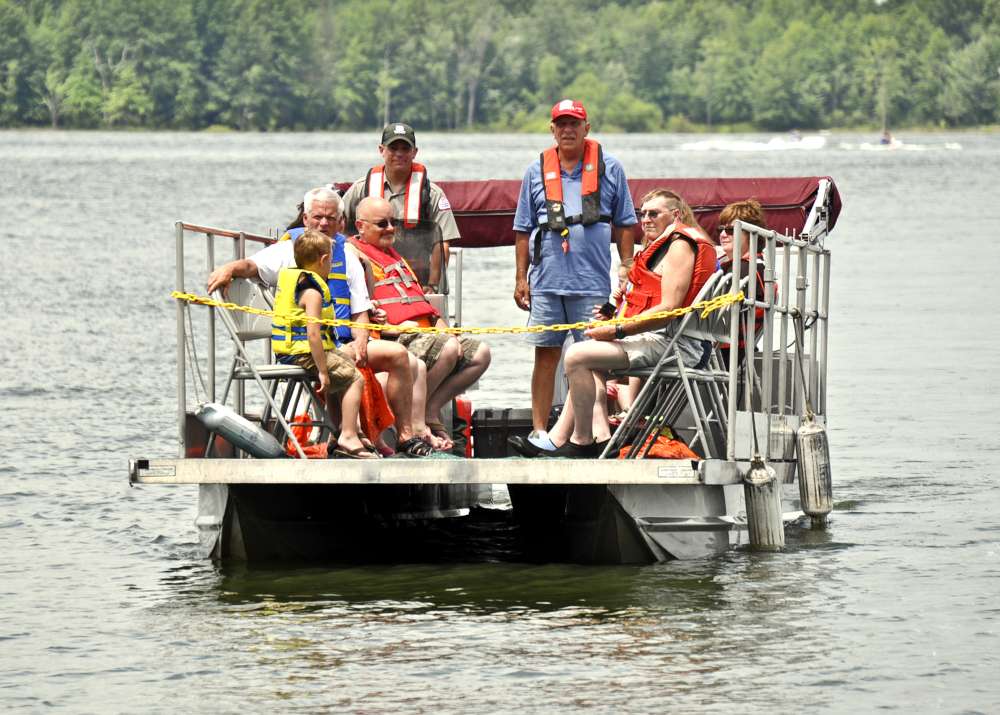
Learn about the deepest lake in Florida
7. Shenango River Lake – Provides flood protection for the Shenango River
Shenango River Lake is a man-made lake. In fact, this lake was constructed to offer flood protection for the Shenango River. The surface area of this lake is 3,550 square miles.
This lake has a shoreline length of 76 miles. The lake has water volume of 118 cubic miles. Moreover, the maximum depth of this lake is 25 feet. It is located at Columbus.
Shenango River Lake, located in the suburban Shenango Valley, offers a beautiful location for your enjoyment.
Picnicking, camping, or simply admiring nature’s splendor are all options for visitors. History lovers will appreciate visiting the Erie Extension Canal’s remains, which are located on project land.
The Erie Extension Canal was crucial to Northwestern Pennsylvania’s economic development.
Lock Number 10’s well-preserved ruins may be seen near Sharpsville, about a half mile downstream from the Shenango Dam.
The Kidd’s Mill Covered Bridge is another historic attraction.
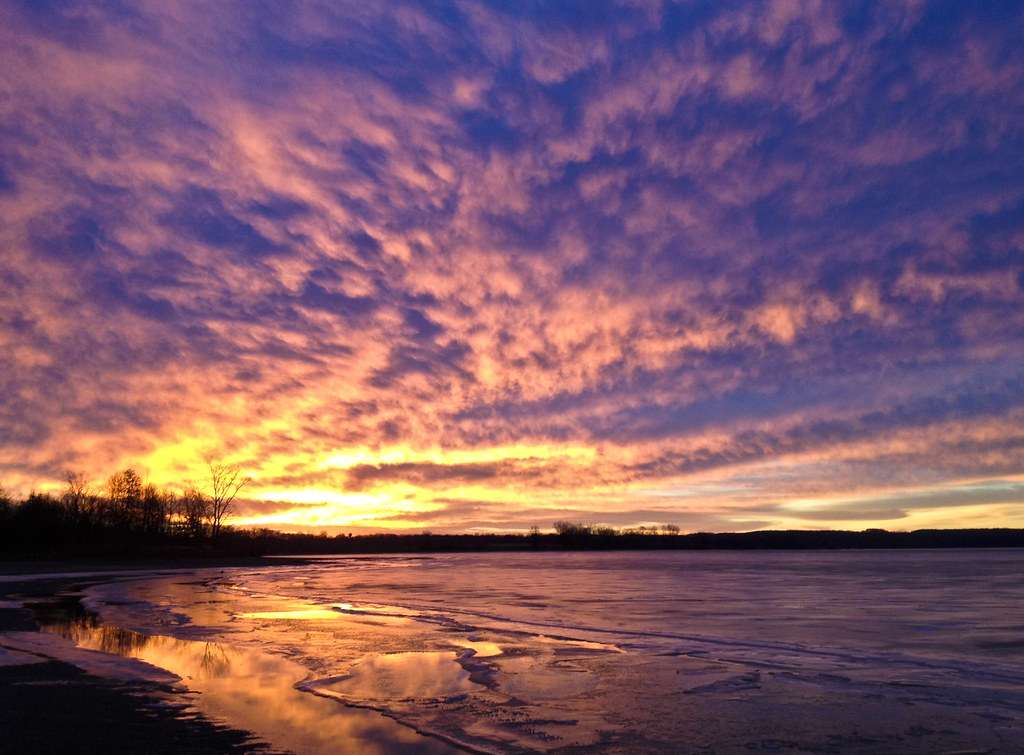
Learn about the largest natural lake in California
8. Senecaville Lake – The third largest inland lake in Ohio
Senecaville Lake is the third largest inland lake that you can see in Ohio as of now. The surface area of this lake is 3,550 square miles.
This lake has a shoreline length of 90 miles. The lake has water volume of 74 cubic miles. Moreover, the maximum depth of this lake is 28 feet. It is located at Columbus.
Seneca Lake, also known as Senecaville Lake, is a popular boating and outdoor recreation destination in Ohio.
It encompasses 3,550 acres and is framed by a magnificent 45-mile-long seashore between Guernsey and Noble counties, just south of Cambridge.
The lake was built by the US Army Corps of Engineers in 1938 for flood control and water conservation and is now managed by the Muskingum Watershed Conservancy District.
Seneca Lake has been known as an outdoor recreational paradise due to popular demand.
Seneca Lake and the Seneca Lake Park that surrounds it are both conveniently accessible. Seneca Lake is well-known for its boating, fishing, camping, hiking, bicycling, hunting, swimming, and other activities.
Each year, from Memorial Day through Labor Day, the park hosts a full calendar of activities and events.
Seneca Lake’s beautiful waters produce excellent catches from all angles.
Both below and above the dam, fishing is permitted. Largemouth bass, crappies, bluegills, bullheads, channel catfish, and saugeye are abundant in Seneca Lake.
The Division of Wildlife stocks the lake with saugeye and striped bass. Muskellunge and White Bass have also been stocked with limited success.
Seneca Lake’s full-service marina provides boat rentals, launch ramps, and a neighboring restaurant.
Year-round, a public launch ramp is provided at the Senecaville Lake Dam. Please note that boat motors at Seneca Lake are limited to 299 horsepower.
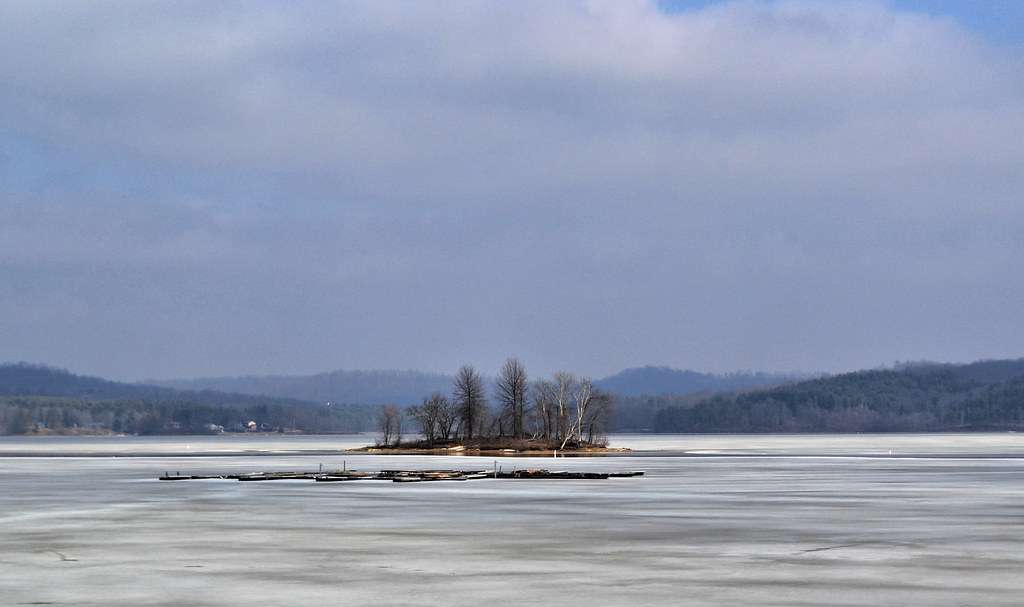
Learn about the lake Michigan the second-largest of the Great Lakes by volume
9. Buckeye Lake – Once used for canal transportation
Buckeye Lake is a lake that is being used for canal transportation in the state of Ohio. The surface area of this lake is 3,173 square miles.
This lake has a shoreline length of 65 miles. The lake has water volume of 28 cubic miles. Moreover, the maximum depth of this lake is 14 feet. It is located at Cleveland.
Buckeye Lake, America’s first significant man-made reservoir, was created in 1826. It was originally built as a canal feeder, but when the Ohio Department of Natural Resources was established in 1949, it became the state’s first official state park.
Buckeye Lake is 3,173 acres in size and offers a variety of outdoor activities all year.
Bluegill, catfish, muskie, bass, perch, and crappie abound in the lake.
When the weather permits, ice fishing, ice boating, cross-country skiing, and ice skating are just a few of the numerous activities available.
Buckeye Lake, which opened in 1826, has long been a popular fishing destination. It is one of Ohio’s greatest lakes for year-round fishing.
Because the lake’s average depth is less than 6 feet, it freezes quickly.
This creates a fantastic ice fishing opportunity. Fingerling saugeye and hybrid striped bass are stocked into the lake every year. Gizzard shad is the primary forage species.
In the winter, flora grows on the lake’s floor, helping to maintain healthy oxygen levels for the lake’s fish.
Buckeye Lake may provide good catches of bluegill, crappie, muskellunge, walleye, largemouth bass, perch, channel catfish, bullhead catfish, and other species that favor vegetation areas, in addition to saugeyes and hybrid striped bass.
Buckeye Lake is a popular destination for high-speed vessels since there are no horsepower limitations for boats operating on the lake.
Canoes, rowboats, kayaks, pontoons, and sailboats, on the other hand, find the lake just as appealing.
There are 9 paved launch ramps, 135 rentable seasonal docks, and two boating, swimming, and camping sites.
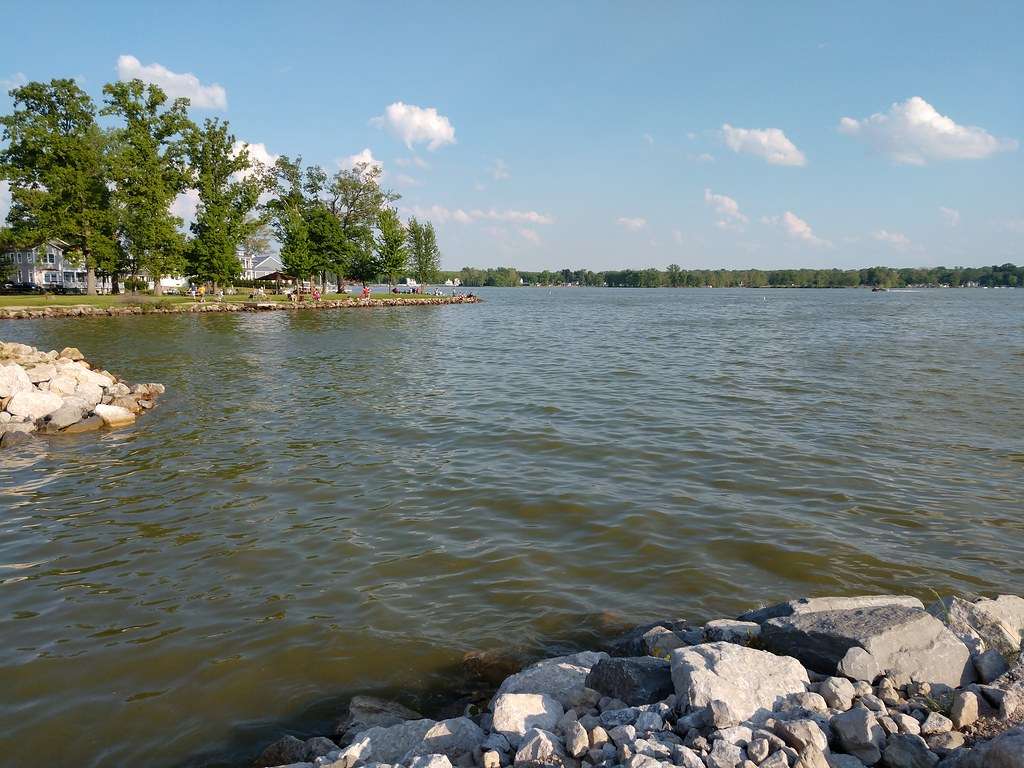
Read: Is Traveling A Hobby? The Ultimate Guide To An Exciting Way Of Life
Learn about the Downsides Of Traveling As A Hobby
10. Salt Fork Lake – Second largest lake with clearest water
Salt Fork Lake is one of the most prominent lakes in Ohio. In fact, it is the second largest lake that offers clear water. The surface area of this lake is 2,970 square miles.
This lake has a shoreline length of 65 miles. The lake has water volume of 48 cubic miles. Moreover, the maximum depth of this lake is 35 feet. It is located at Columbus.
Salt Fork Lake, located in rural Guernsey County and surrounded by Ohio’s biggest state park, has 2,952 acres of recreational water.
Boating, sailing, swimming, fishing, hiking, camping, picnicking, horseback riding, hunting, golfing, water sports, winter sports, wildlife watching, and basketball are all accessible at Salt Fork State Park.
Ice fishing, ice boating, ice skating, snowmobiling, cross-country skiing, and sled riding are all winter activities.
Largemouth bass, bluegill, crappie, walleye, and muskellunge are the most frequent fish found in Salt Folk Lake.
The state record for the biggest muskie ever taken in Ohio is held by Salt Fork Lake. Jerrold Seibert’s catch in 2000 was 54″ long and weighed 44 pounds.
Two marinas are located in Salt Fork State Park. They provide fishing equipment, boating supplies and services, as well as dock and boat rentals.
A vast number of boats may be rented by the hour, day, or week.
Salt Fork Lake has ten (10) public launch ramps for convenient access and supports boats with unlimited horsepower.
Swimmers and other water sports enthusiasts may enjoy the lake by using the speed and ski zones, which are indicated by buoys.
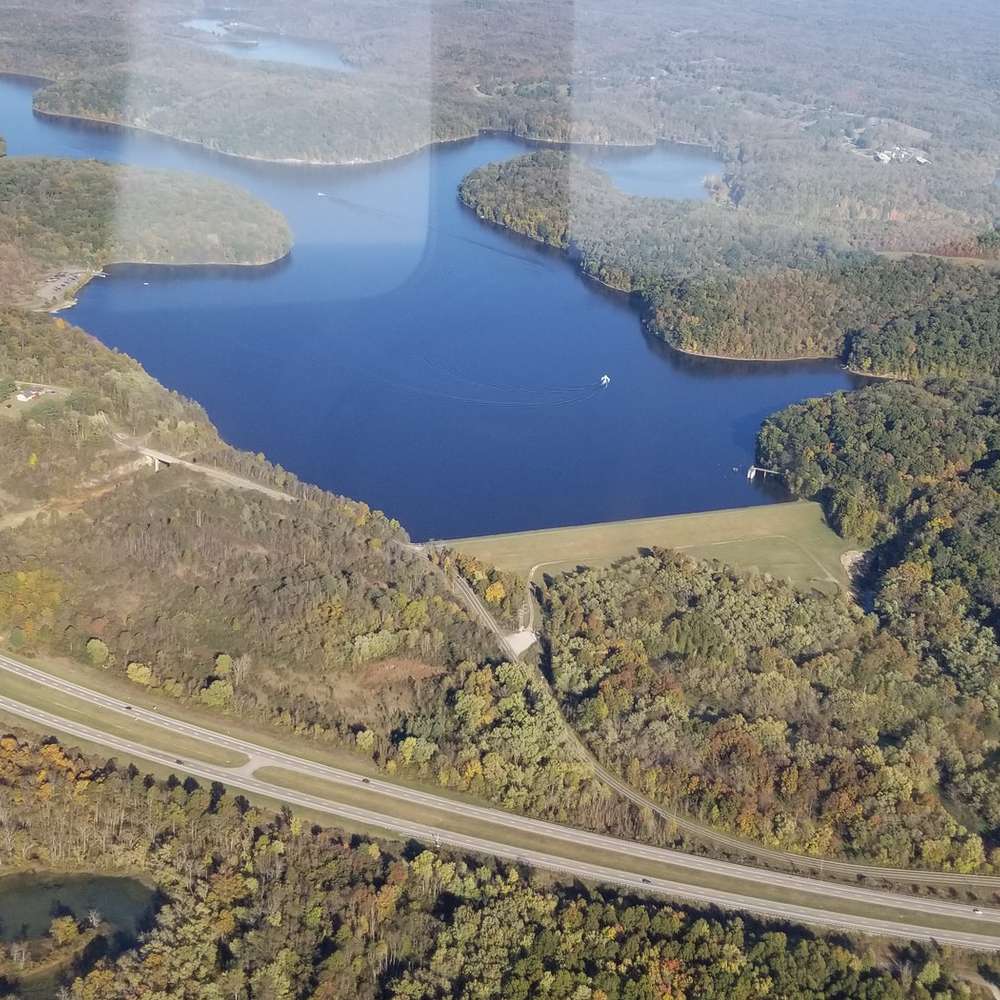
11. Caesar Creek Lake – Second deepest lake in Ohio
Caesar Creek Lake is the second deepest lake that you can see in Ohio as of now. The surface area of this lake is 2,830 square miles.
This lake has a shoreline length of 98 miles. The lake has water volume of 345 cubic miles. Moreover, the maximum depth of this lake is 115 feet. It is located at Dayton.
The 2,830-acre lake at Caesar Creek provides flood protection as well as several recreational activities such as fishing, boating, swimming, camping, horseback riding, hiking, fossil searching, and more.
In the 1970s, the US Army Corps of Engineers, the Ohio Department of Natural Resources, and two non-profit groups collaborated to build the lake, which is now maintained by the US Army Corps of Engineers, the Ohio Department of Natural Resources, and two non-profit organizations.
Caesar Creek Lake is roughly 15 miles southeast of Dayton and 30 miles northeast of Cincinnati.
Along State Route 73 in southern Ohio, it is four miles east of Waynesville and two miles west of I-71.
Largemouth and smallmouth bass, bluegill, black and white crappie, carp, and catfish abound throughout Caesar Creek Lake.
Fish populations and water quality control are monitored by the Ohio Division of Wildlife.
The fishery will be supported by the natural increase of fish populations in streams and flooded ponds, thanks to extensive habitat restoration.
Saugeye and Muskellunge are also supplied on a yearly basis.
Boating, fishing, swimming, water skiing, and sailing are just a few of the water sports available on the seven-mile-long lake, which has 40 miles of shoreline.
The Wellman Meadows boat ramp near the dam, the Furnas Shores and North Shores boat ramps off of State Route 73 on the west side, and the Haines Road boat ramp on the upper end are all located around the lake providing convenient access.
On the upper east side, near Mound and Center roads, is the campsite boat launch.
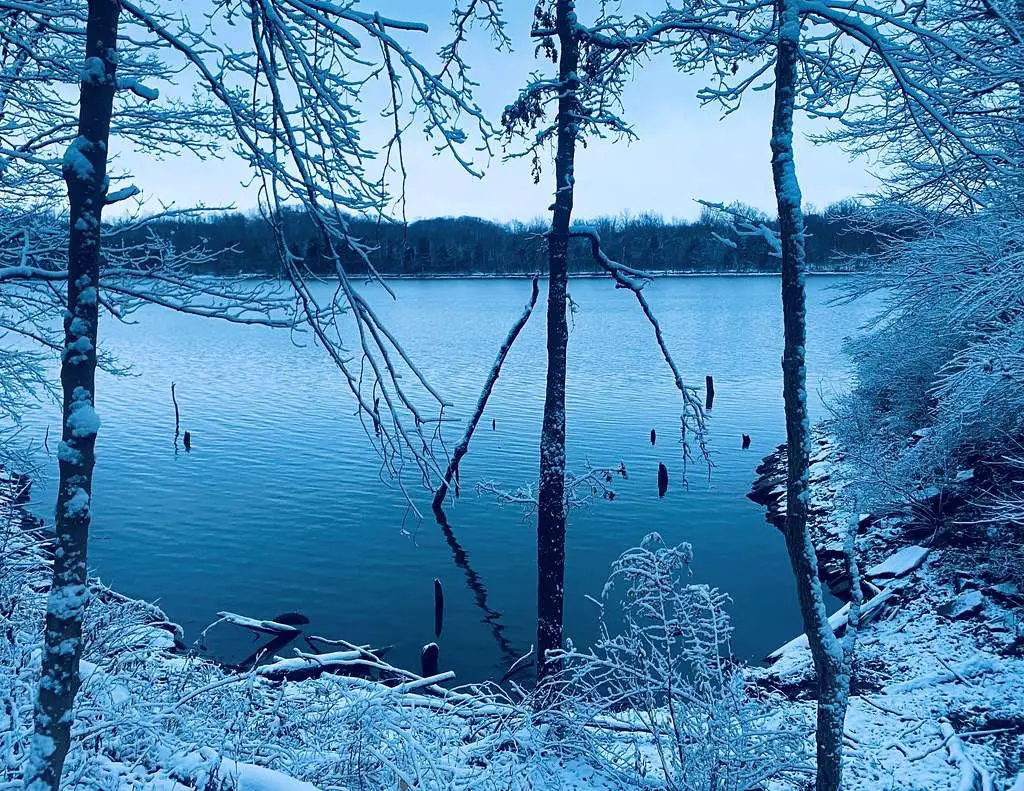
12. West Branch Lake – the 2,665-acre reservoir
West Branch Lake is a massive 2,665 acre reservoir. The surface area of this lake is 2,350 square miles. This lake has a shoreline length of1,400 miles.
The lake has water volume of 32 cubic miles. Moreover, the maximum depth of this lake is 25 feet. It is located at Cleveland.
The picturesque West Branch Reservoir / Lake, located on the west branch of the Mahoning River in Portage County, Ohio, offers 2,350 acres of recreational waters bordered by a 40-mile coastline with several forks and bays.
The lake offers excellent fishing, exciting boating, and a sand area for swimming.
The West Branch Lake State Park is available to the public all year. Boating, fishing, swimming, and water skiing are popular activities on the lake, while camping, hiking, hunting, bicycling, and horseback riding are available in the park.
Nine non-electric plots with basic amenities for keeping a horse are available at an equestrian camp. Reservations are required for these locations.
In the winter, ice boating, ice fishing, snowmobiling, and cross-country skiing are popular.
Fish populations are monitored by the Department of Natural Resources’ Division of Wildlife. Tiger musky, northern pike, striped bass, largemouth and smallmouth bass, and walleye are the most sought after species in West Branch Lake.
There are also yellow perch, white and black crappie, bluegill, bullhead, and channel catfish can be caught.
On West Branch Lake, there are no horsepower restrictions, making it especially appealing to boaters and water sports enthusiasts.
The lake is accessible via six boat ramps. At the marina, you may hire boats and get supplies.
Within 300 feet of the shore, there is a no wake zone, and the upper part of the lake has speed limitations.
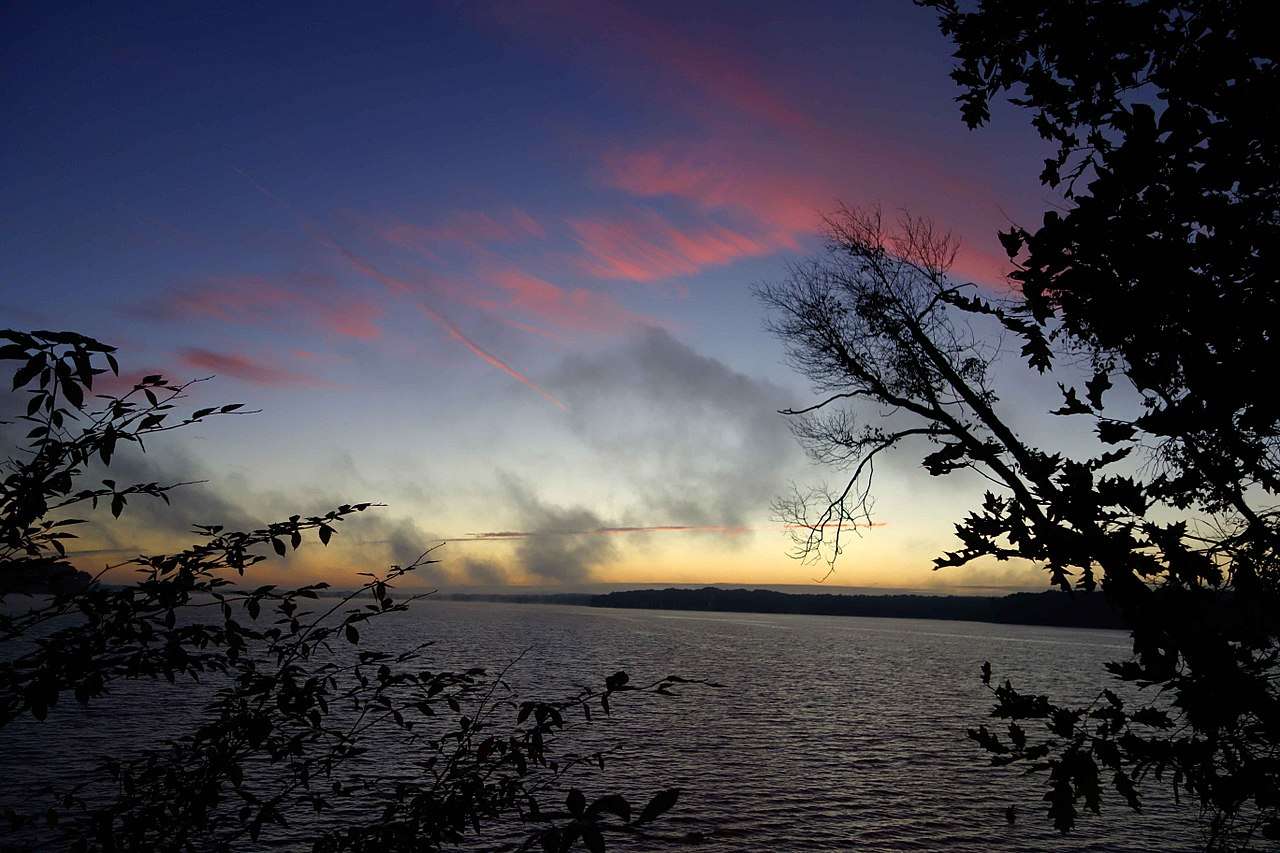
13. Tappan Lake-Largest Lake with clearest water
Tappan Lake is the largest lake with clearest water in Ohio. The surface area of this lake is 2,250 square miles. This lake has a shoreline length of 36 miles.
The lake has water volume of 23 cubic miles. Moreover, the maximum depth of this lake is 28 feet. It is located at Cleveland.
Tappan Lake is a 2,350-acre swimming, boating, and fishing lake in Harrison County, Ohio, located between Cadiz and Uhrichsville.
Picnic spaces, campgrounds, cabins, boat rental, bait, and food service are all operated by the Muskingum Watershed Conservancy District (MWCD).
The lake’s 47-mile shoreline offers more shoreline fishing opportunities than any other lake administered by the MWCD. Handicapped access is available at boat launching sites and camps.
Tappan Lake Park is also a popular hunting, hiking, and wildlife viewing site.
A six-mile Fox Trail, a two-mile Pine Trail, a four-mile Deer Trail, a Cabin Beach Trail, a Nature Trail, and a Turkey Ridge Trail are among the designated routes.
Largemouth bass, bluegill, crappie, and channel catfish are all abundant at Tappan Lake. Perch, sunfish, and bullheads all have small but rising numbers in Tappan Lake.
The Division of Wildlife of the Ohio Department of Natural Resources fills the lake with saugeye. As a result, saugeye fishing at Tappan Lake is becoming increasingly popular.
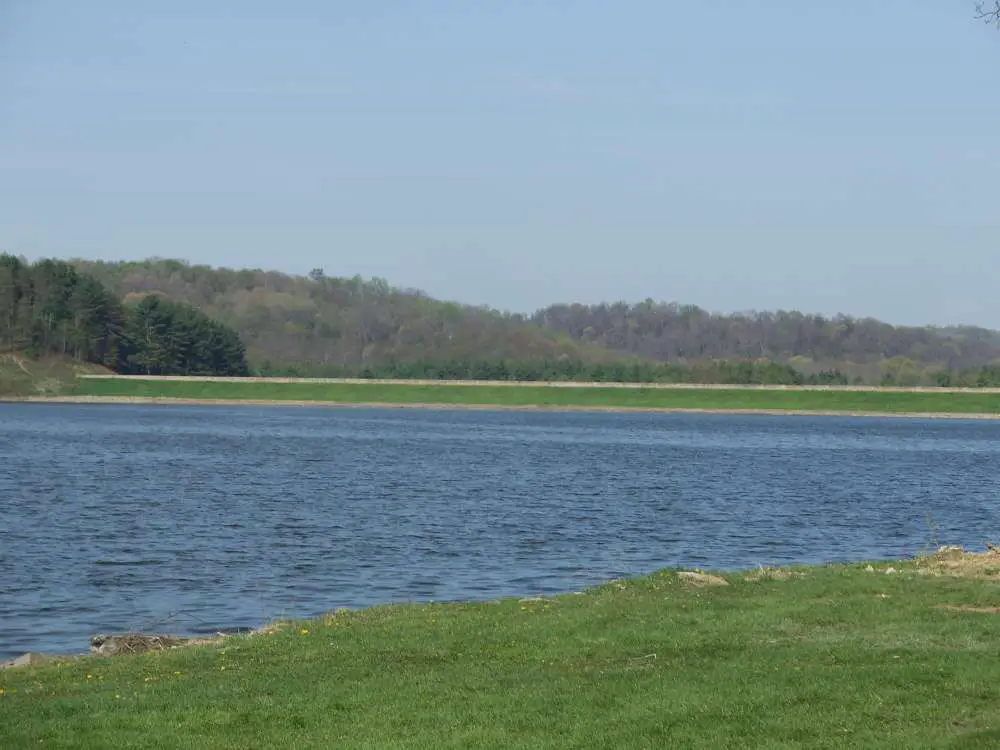
14. Clendening Lake – owned by the Muskingum Watershed Conservancy District
Clendening Lake is a lake that is owned by the Muskingum Watershed Conservancy District. The surface area of this lake is 1.800 square miles.
This lake has a shoreline length of 34 miles. The lake has water volume of 56 cubic miles. Moreover, the maximum depth of this lake is 34 feet. It is located at Cleveland.
Clendening Lake is Ohio’s largest natural lake and one of the state’s most beautiful rivers. The full-service marina is the only commercial development.
Over 1,800 acres of pristine fishing grounds on Lake Clendening, peace and quiet reign.
44 miles of beachfront are defined by a kaleidoscope of trees and rich natural beauty, with little evidence of urbanization.
Boating, fishing, and swimming are all popular activities on the lake.
Clendening is Ohio’s most popular bass fishing lake.
The lake is particularly appealing to anglers due to its abundant populations of largemouth bass, flathead and channel catfish, crappie, and saugeye.
Clendening Lake is the place to go if you want to catch delicious fish in a peaceful setting.
According to a recent electrofishing survey conducted by the Ohio Division of Wildlife, over half of the bass measured at least 12 inches in length, with 17% exceeding 15 inches.
Anglers can catch channel catfish equally as well as bass.
The ODOW found that over 60% of the fish they collected were at least 16 inches long, with only 6% measuring 28 inches or greater.
Flathead catfish are lurking on the stony bottom of the lake’s lower end. They may easily weigh in at 20 pounds.
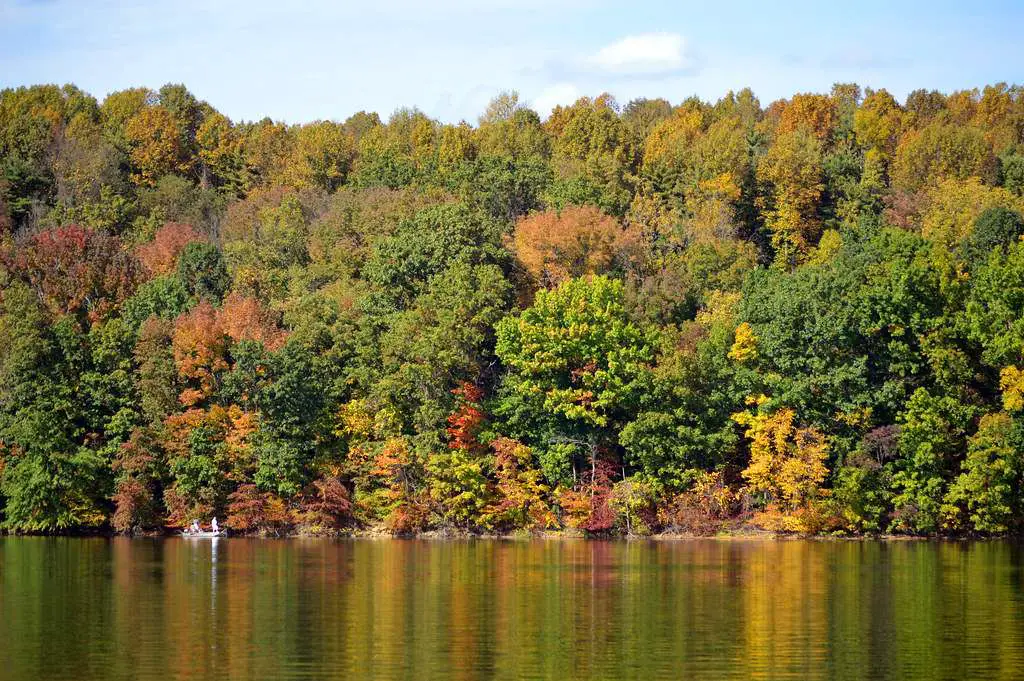
15. Lake Milton – holds a century’s-worth of history
Lake Milton is a lake that is holding a history worth a century. This is oen of the most ancient lakes that you can find within the state.
The surface area of this lake is 1,685 square miles. This lake has a shoreline length of 42 miles. The lake has water volume of 84 cubic miles.
Moreover, the maximum depth of this lake is 45 feet. It is located at Cleveland.
Lake Milton, on the Trumbull County border in northwest Ohio, has 1,685 acres of productive fishing waters surrounded by a 23-mile coastline.
Swimming at the 600-foot beach, picnicking at one of four shelter houses, boating, fishing, hunting, hiking, and winter sports are all accessible at Lake Milton when the weather permits.
Walleye, crappie, bluegill, largemouth and smallmouth bass, white bass, brown bullhead, channel catfish, yellow perch, and muskellunge all thrive in Lake Milton.
The Division of Wildlife of the Ohio Department of Natural Resources administers and supplies the lake with the species specified as needed.
Motorboats on Lake Milton have no horsepower limitations, allowing for speedy boats on the water.
There are two renovated public boat ramps, as well as a marina on Lake Milton that sells fuel and seasonal spaces.
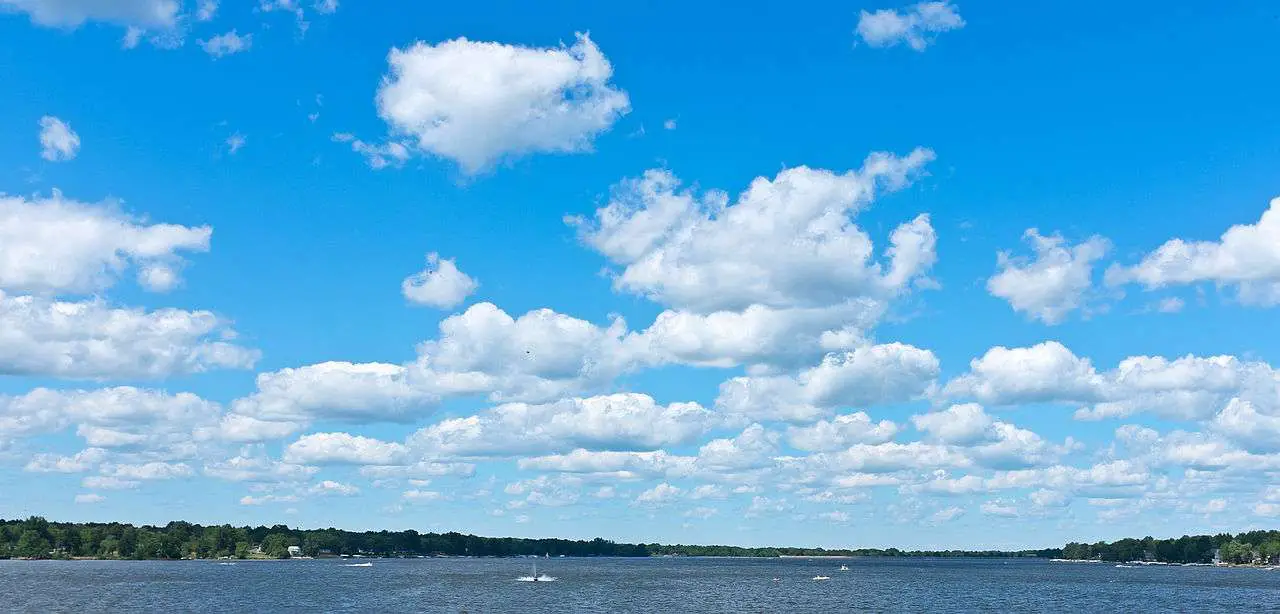
16. Atwood Lake – the great majority of the water body lies on the Carroll side of the border
Atwood Lake is something where majority of water likes on the Carroll Side of the border. The surface area of this lake is 1,540 square miles.
This lake has a shoreline length of 20 miles. The lake has water volume of 41 cubic miles. Moreover, the maximum depth of this lake is 34 feet. It is located at Cleveland.
Atwood Lake, located in Dellroy, Ohio, is one of the best lakes for sailing and pleasure boating in the state and vicinity.
Atwood Lake, located 35 miles from the Pennsylvania border and less than 30 miles from Akron, Canton, and Cleveland, highlights northeastern Ohio’s gorgeous, peaceful countryside.
The lake is 1,540 acres in size and is surrounded by a 28-mile tree-lined coastline with two marinas offering boat sales, servicing, rentals, and docking.
Atwood Lake Marina West has a restaurant open all year.
At the Atwood Lake Day Use Area and below the dam, fishing is permitted. The Division of Wildlife of the Ohio Department of Natural Resources keeps track of both the water quality and the fish population.
Largemouth bass, bluegill, northern pike, crappie, bullheads, channel catfish, yellow perch, and saugeye are among the fish stocked in the lake by the ODNRDW.
Sailboats, pontoons, fishing boats, canoes, and kayaks are attracted to Atwood Lake because of the 25 horsepower limit.
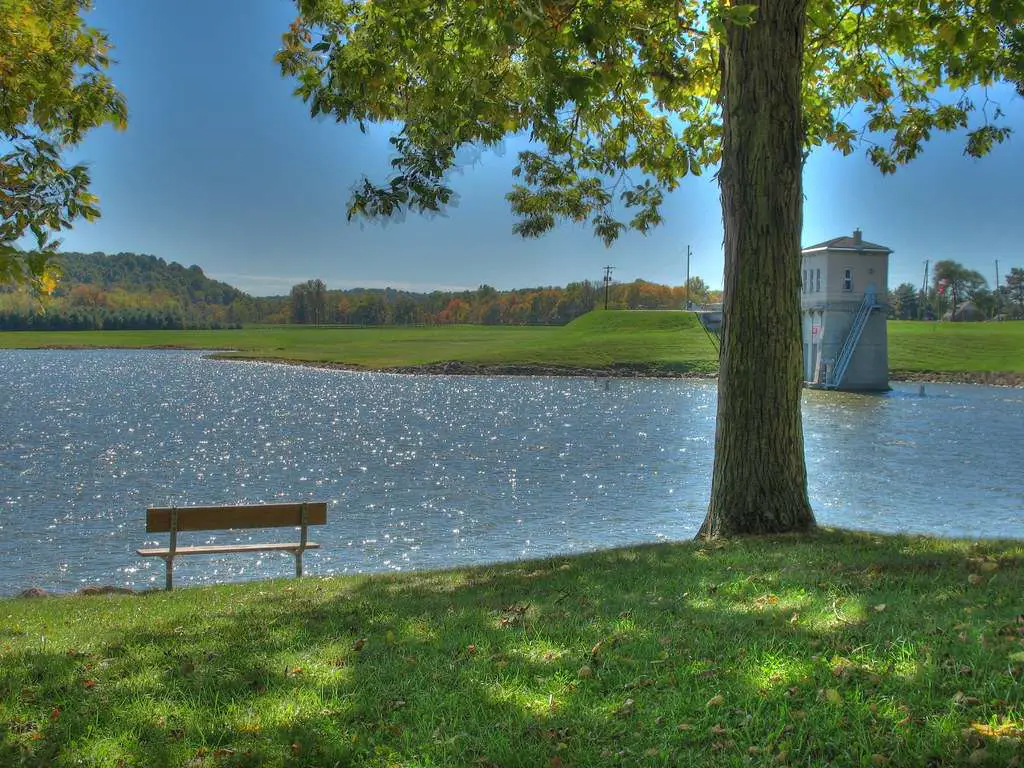
17. Delaware Lake – was sanctioned by the Flood Control Act of 1938
Delaware Lake was sanctioned by the Flood Control Act of 1938. The surface area of this lake is 2,565 square miles. This lake has a shoreline length of 38 miles.
The lake has water volume of 21 cubic miles. Moreover, the maximum depth of this lake is 12 feet. It is located at Delaware.
Delaware State Park is available to the public all year. Delaware Lake is available to fishing and swimming in the authorized swimming area, and boats with unrestricted horsepower are permitted.
There is a marina on the property that offers gasoline as well as fishing and boating equipment. Largemouth and smallmouth bass, crappie, and muskellunge are among the game species found in the lake.
Along the lake, waterfowl hunting is authorized. A lottery mechanism is used to distribute a large number of duck blinds.
On the wildlife area, hunting for other game species is authorized. On the lake’s shore, there are several picnic spots with tables accessible on a first-come, first-served basis.
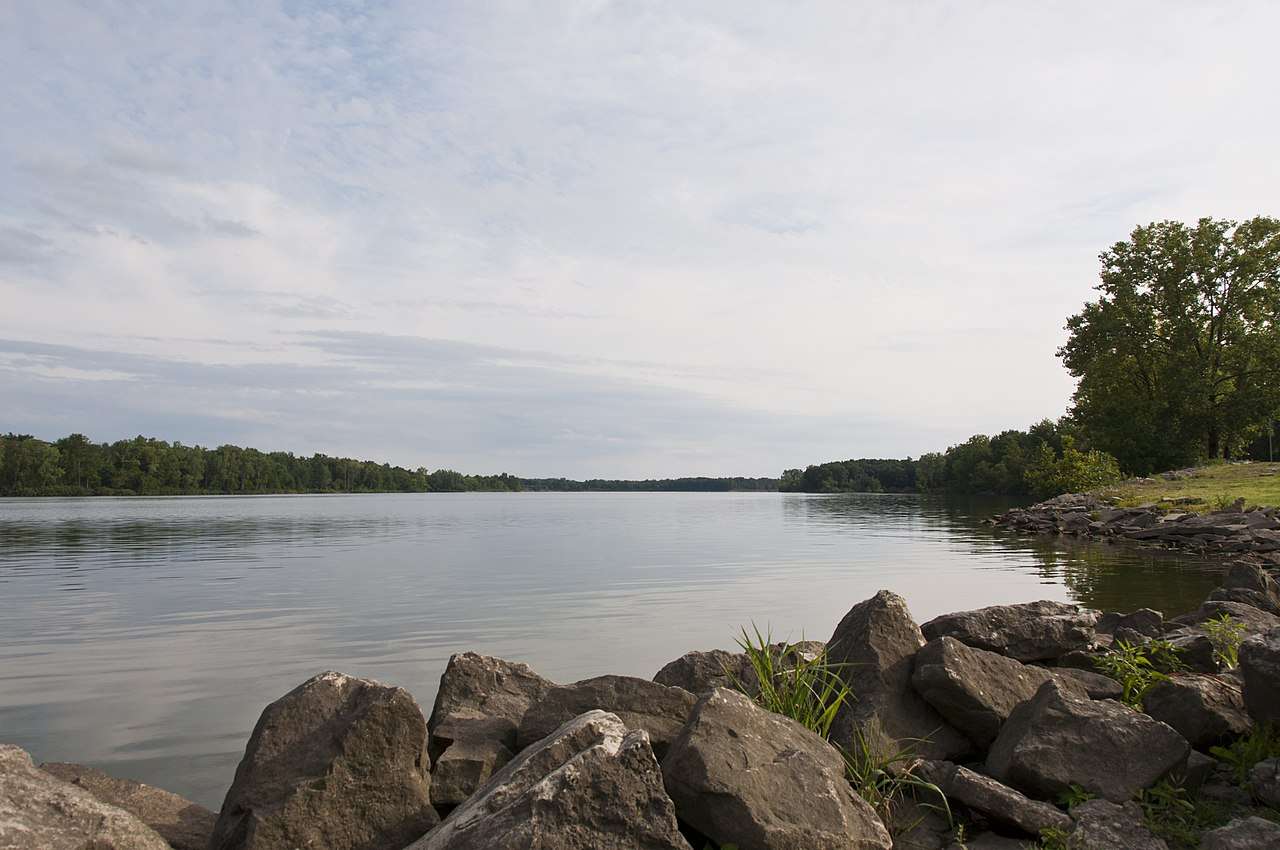
18. Pleasant Hill Lake-Largest Lake with Crisp clean air and glistening blue water
Pleasant Hill Lake is the largest lake that has crisp and clean air. It also has glistering blue water. The surface area of this lake is 1,224 square miles.
This lake has a shoreline length of 84 miles. The lake has water volume of 56 cubic miles. Moreover, the maximum depth of this lake is 17 feet. It is located at Columbus.
Pleasant Hill Lake is a 783-acre man-made lake in Ohio, located near Perrysville and in the counties of Ashland and Richland.
Pleasant Hill Dam, on the Clear Fork of the Mohican River, was completed in 1936.
The earth-fill dam that forms the lake is 113 feet (34 meters) tall. The lake is in Ashland, although it stretches into Richland.
The lake was developed by the United States Army Corps of Engineers to help with flood management. This is not the most popular lake for recreational activities.
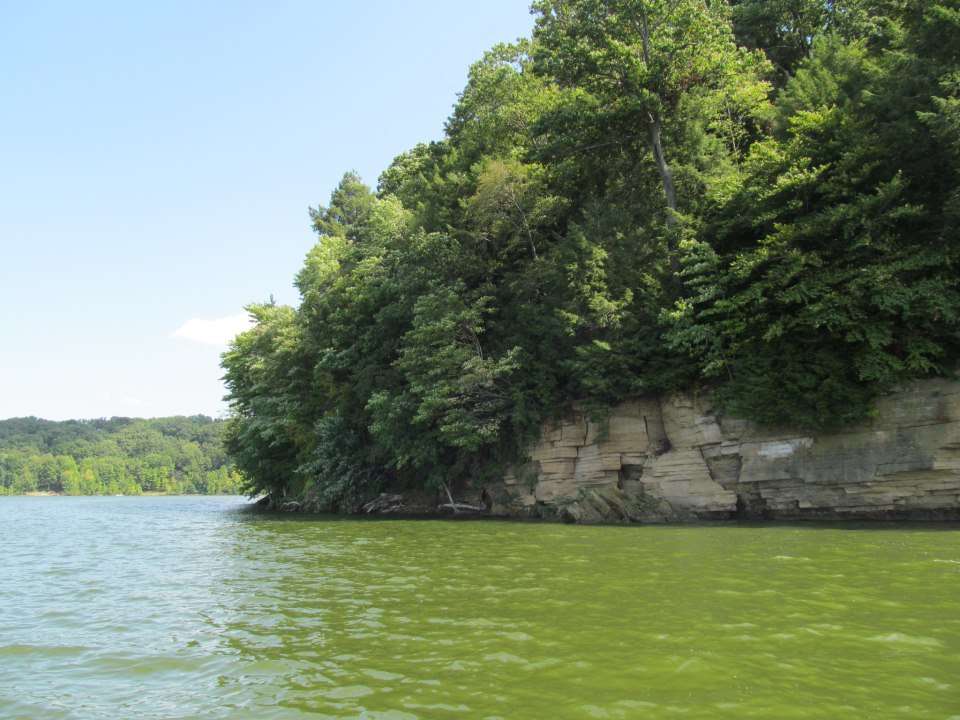
19. Acton Lake – recreation opportunities to generations of visitors
Action lake is well-known for the recreation opportunities offered to the guests. Due to the same reason, it is attracting visitors of all ages.
The surface area of this lake is 5.625 acres. This lake has a shoreline length 7 miles. The lake has water volume of 3 cubic miles.
Moreover, the maximum depth of this lake is 18 feet. It is located at Dayton.
On the southwestern frontier of Ohio, Acton Lake is located in Preble and Butler counties, roughly 7 miles north of Oxford, 40 miles northwest of Cincinnati, and 35 miles southwest of Dayton.
Boats with motors of less than 10 horsepower are not permitted on Acton Lake.
Boats having more than ten horsepower must be driven at a zero-wake pace.
There is just one launch ramp available.
Seasonal dock rentals are offered for 132 docks. There are boat rentals and gasoline available.
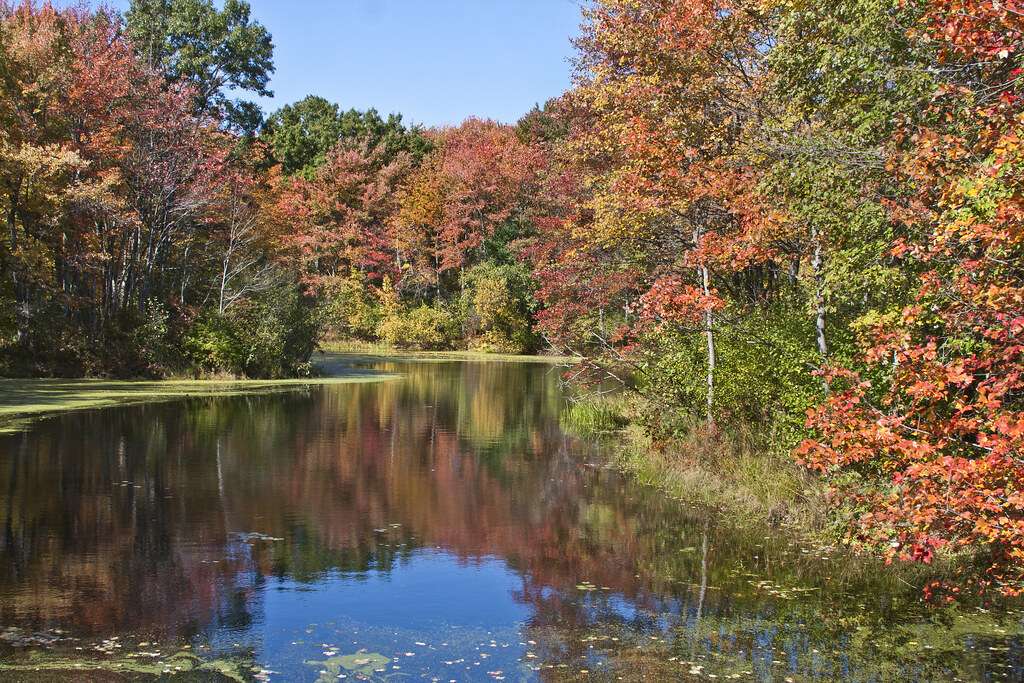
20. Apple Valley Lake -Third deepest lake in Ohio
Apple Valley Lake is the third deepest lake you can see in Ohio as of now.
The surface area of this lake is 0.80 square miles. This lake has a shoreline length of 5 miles.
The lake has water volume of 11 cubic miles. Moreover, the maximum depth of this lake is 36 feet. It is located at Apple Valley.
Apple Valley Lake, Ohio is a gated community that welcomes visitors, travelers, and families searching for a vacation or year-round residence.
You have the option of staying in Apple Valley as a guest of the property owner or renting out a beautiful house to enjoy lake life.
You must be a property owner or be accompanied by a property owner as a visitor to utilize the facilities such as the camping area, community centre, clubhouse, lake, and beaches.
Guest permits can be obtained for the property owner’s immediate family so that they are not required to be present when utilizing the amenities.
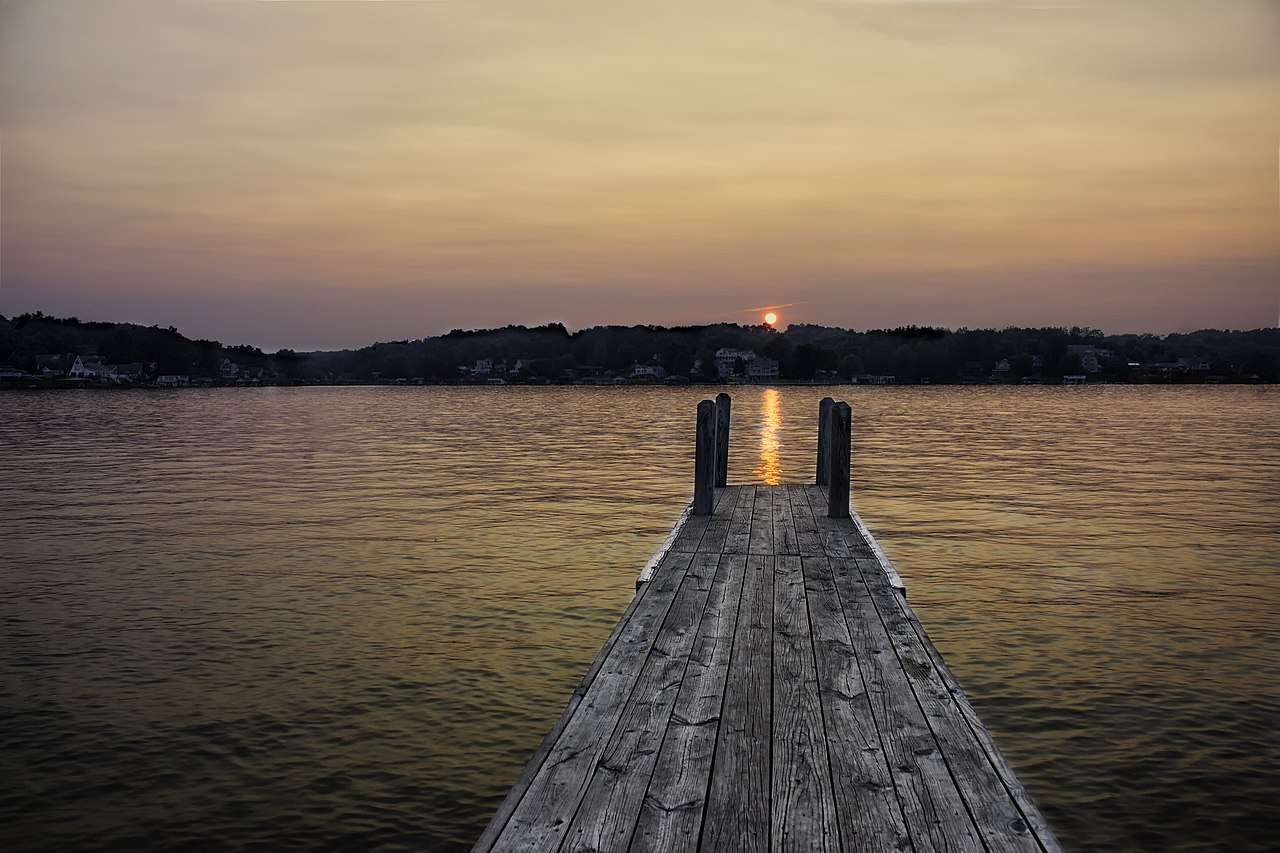
Final words
We shared a list of top 20 lakes that you can see in Ohio as of now. Take a look at these lakes and you can plan where you can head during the upcoming vacation.
Proud owner of https://travelyouman.com/
